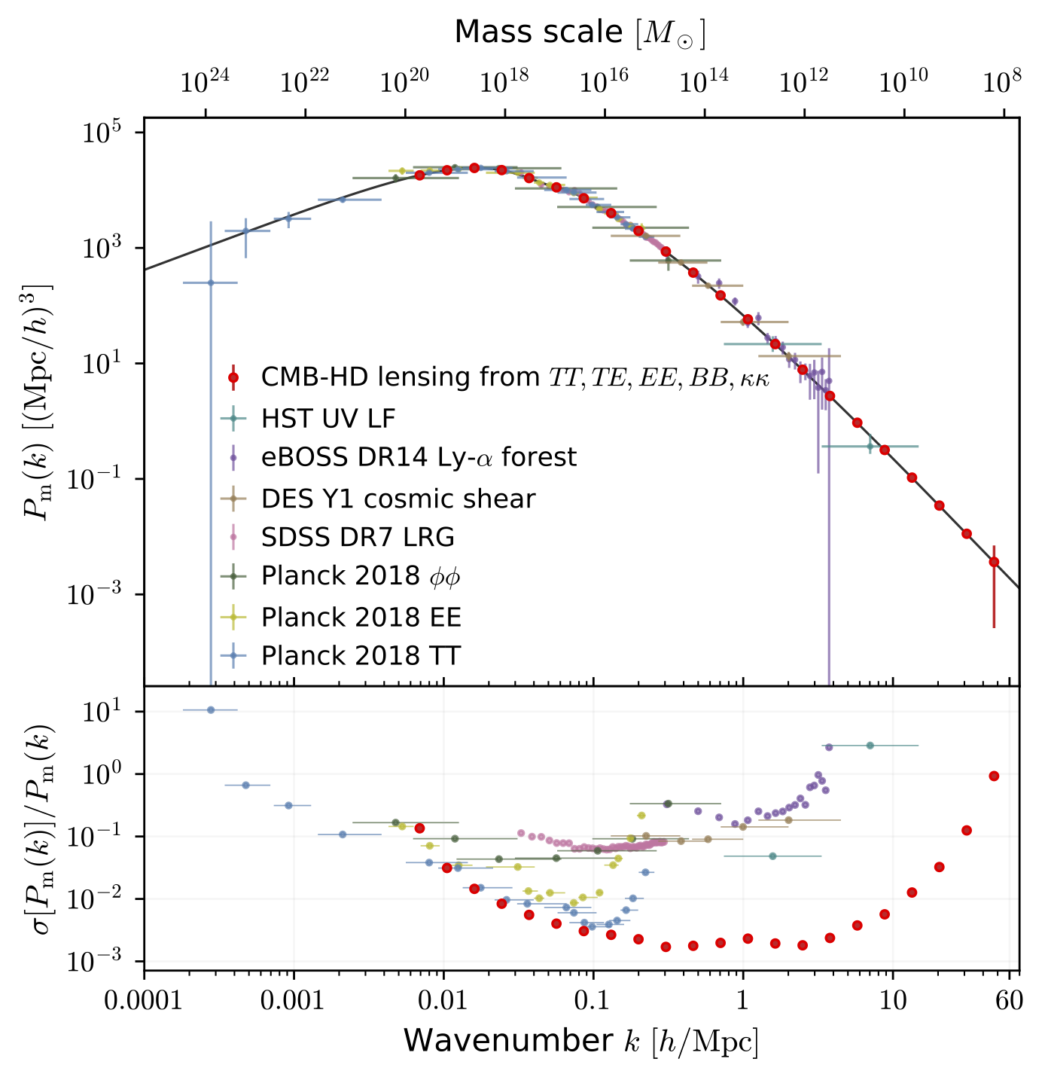Using Astronomical Telescopes to Study Unseen Matter
Key CMB-HD Science Objectives
1. Measure the small-scale matter power spectrum from weak gravitational lensing using the CMB as a backlight; with this, CMB-HD aims to distinguish between a matter power spectrum predicted by models that can explain observational puzzles of small-scale structure, and that predicted by vanilla cold dark matter (CDM), with a significance of at least 8σ.
2. Measure the number of light particle species that were in thermal equilibrium with the known standard-model particles at any time in the early Universe, i.e. Neff , with a 1σ uncertainty of σ(Neff ) = 0.014.
3. Constrain or discover axion-like particles by observing the resonant conversion of CMB photons into axions in the magnetic fields of galaxy clusters.
Figure 1
Illustration of how CMB-HD lensing measurements probe the matter power spectrum. Shown in red are the forecasted errors. Indicated on the top x-axis is the corresponding mass scale today for the comoving wavenumbers on the bottom x-axis. CMB-HD lensing constraints span four orders of magnitude in wavenumber, 0.005 h/Mpc < k < 55 h/Mpc, and 12 orders of magnitude in mass scale, going down to 108M⊙. In the bottom panel, we show the error bars on the matter power spectrum as a fraction of the total power. CMB-HD achieves sub-percent fractional errors in the range 0.03 h/Mpc < k < 10 h/Mpc. Figure from arXiv:2405.12220, JCAP, 2025.


Figure 2
Shows that CMB-HD can achieve σ(Neff ) = 0.014, which would cross the critical threshold of 0.027. This would potentially rule out or find evidence for new light thermal particles with 95% (2σ) confidence level. (Original figure by Benjamin Wallisch in arXiv:1903.04763 and arXiv:1810.02800; modified with addition of CMB-HD limit. Used with permission.)
References (see these works and references therein)
Sehgal, N et al, CMB-HD:
Astro2020 RFI Response, Feb 2020, https://arxiv.org/abs/2002.12714
Sehgal, N et al, CMB-HD:
An Ultra-Deep, High-Resolution Millimeter-Wave Survey Over Half the Sky, September 2019,
https://arxiv.org/pdf/1906.10134.pdf

